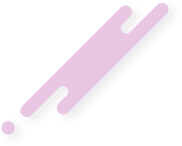Why We Chose Flutter for Cross-Platform Product Development
Tech Stack & Tools
In a world where users expect seamless app experiences across Android, iOS, desktop, and even the web, choosing the right development framework is critical.
At Tamilzorous, we evaluated multiple options — from React Native and Kotlin Multiplatform to native Android/iOS builds. But for performance, scalability, and speed, Flutter came out on top.
Here’s why.
What Is Flutter?
Flutter is an open-source UI toolkit created by Google that enables developers to build beautiful, natively compiled apps from a single codebase — for Android, iOS, Windows, macOS, Linux, and the web.
Why Flutter Works So Well for Us
One Codebase, Multiple Platforms
With a single Flutter codebase, we develop apps for Android and iOS simultaneously — drastically reducing development time and maintenance overhead.
Rich, Responsive UI
Flutter’s widget-based design system allows us to build highly customizable interfaces, including complex dashboards, form-heavy pages, and multilingual layouts.
Native Performance
Despite being cross-platform, Flutter apps compile to native ARM code — ensuring smooth animations and rapid load times, even on mid-range devices.
Faster Testing & Iterations
With hot reload and integrated testing tools, our team ships features faster, responds to QA quicker, and iterates efficiently across projects.
Growing Ecosystem & Community
From Firebase integration to Agora for video calling and device-native plugins — Flutter’s ecosystem is developer-friendly and continually expanding.
Use Cases We've Delivered with Flutter
- Multilingual health apps with scheduling and video calls
- ERP dashboards with QR-based inventory scanning
- VCI diagnostic tools with Bluetooth integration
- Visitor management systems with kiosk interfaces
- Care team portals with earnings dashboards and smart filters
Flutter in Our Tech Stack
In most of our solutions, Flutter plays a key frontend role:
- Frontend: Flutter + Dart
- Backend: Laravel / Node.js
- Database: Firebase / MySQL
- Integrations: BLE/Wi-Fi, QR scanner, Agora SDK, PowerBI
- Platform Targets: Android, iOS, Windows apps
Business Benefits for Our Clients
- Faster time-to-market
- Reduced development and maintenance cost
- Consistent user experience across all devices
- Rapid rollout for MVPs and phase-wise releases
- Easier localization (language + regional formats)
When Not to Use Flutter?
While we love Flutter, we’re honest when it's not the best fit — such as:
- Ultra-light apps under 3MB
- Projects requiring advanced OS-level integrations (e.g., background location services on iOS)
- When a team is already heavily invested in native frameworks
Final Thoughts
At Tamilzorous, we don’t just choose technology — we align it with the problem, the user, and the product lifecycle. Flutter checks all those boxes, and more.
Whether you're building an MVP or scaling a production-grade app, Flutter brings the speed of a startup with the polish of an enterprise.







